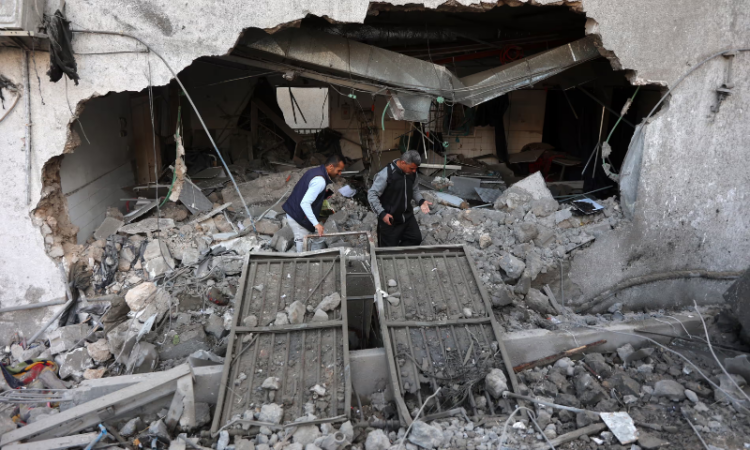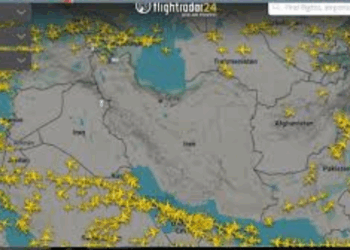Gaza, April 13, 2025: An Israeli airstrike struck al-Ahli Hospital in Gaza City early Sunday, destroying critical infrastructure as Israel intensified its military operations across the Palestinian territory and sealed off the southern city of Rafah.
The Palestinian Civil Defence Agency reported that missiles targeted the hospital—also known as the Baptist or Ahli Arab Hospital—which was the last functioning medical facility in northern Gaza. The attack reportedly destroyed the surgical unit and the oxygen generation system for intensive care patients.
While no immediate casualties were reported from the strike itself, Gaza’s Health Ministry said a child died during the rushed evacuation due to the unavailability of urgent care.
The Israel Defense Forces (IDF) confirmed the strike, alleging that the hospital complex was being used as a command and control center by Hamas militants. “The compound was used by Hamas terrorists to plan and execute attacks against Israeli civilians and IDF forces,” the military said, adding that steps were taken to issue advance warnings and minimize civilian harm.
However, Palestinian officials said staff and patients were given only 20 minutes to evacuate. Video footage circulating online showed people fleeing as plumes of smoke and fire engulfed the facility. The Gaza Health Ministry condemned the airstrike as a “horrific crime” and accused Israel of systematically targeting the healthcare system.
The al-Ahli hospital is operated by the Anglican Church in Jerusalem. The Episcopal Diocese of Jerusalem expressed outrage, stating that this marks the fifth attack on the facility since the conflict began.
Though international humanitarian law protects hospitals from military action, Gaza’s medical infrastructure has repeatedly been targeted since the war began on October 7, 2023. Israel claims Hamas embeds military operations in civilian areas, including hospitals—a charge Hamas denies.
Meanwhile, Israel has completed its takeover of a new “security zone” that isolates Rafah from the rest of Gaza. Defense Minister Yoav Gallant announced the seizure of the “Morag axis”—a corridor running between Rafah and Khan Younis—granting Israel effective control over the southernmost stretch of Gaza along the Egyptian border.
Evacuation orders have since been issued for several neighborhoods in Khan Younis. Rafah, which had a prewar population of around 275,000, now hosts more than 1.4 million displaced Palestinians, many of whom are being forced to move once again.
According to the United Nations, over two-thirds of Gaza is now either under evacuation orders or designated as “no-go” zones, making humanitarian operations nearly impossible. Hundreds of thousands of Palestinians are now crammed into makeshift shelters, often lacking basic necessities.
Israeli officials maintain that the ongoing military pressure is aimed at compelling Hamas to release remaining hostages and accept new ceasefire terms. Defense Minister Gallant vowed to extend operations across “most of Gaza,” while urging Palestinians to reject Hamas’s rule.
Israeli Prime Minister Benjamin Netanyahu’s government continues to enforce a strict blockade on food, fuel, and aid, drawing sharp criticism from rights groups. Humanitarian agencies warn of catastrophic shortages, while Israel insists sufficient supplies have entered Gaza—a claim widely disputed by aid organizations.
The war, now in its seventh month, began following Hamas’s October 7 attack on southern Israel, which killed around 1,200 people. Since then, over 50,000 Palestinians—mostly civilians—have been killed in Israeli retaliatory operations, according to Gaza’s health ministry.








